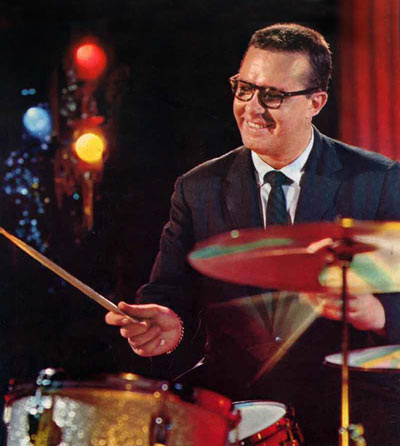
The Dave Brubeck Quartet
Take Five
“Take Five” is one of the most well-known songs in the history of jazz music. In 1959, the Dave Brubeck Quartet released “Time Out”, an amazing album with “Take Five” as its most popular song. There isn’t one single reason why “Take Five” became so popular, but rather there are many. It required the collaborative talents of all four members of the quartet to create such a great flowing song. Dave Brubeck brought his expertise with the piano. Paul Desmond produced his amazing saxophone sound, along with his composition talents in writing the song. Gene Wright provided an excellent bass backbeat. Joe Morello brought his amazing talents on the drum set to give the song exactly what it needed. All of these elements were in full force in producing this song.
Here’s an old video of the song performed live. I preferred a video over an mp3 because I wanted to “show” you why this band is so exceptionally talented. I’ll talk about the details after the video. First, watch it, see what you think, and try to pick out what you think makes this song so different from any other jazz chart.
First of all, the saxophone melody is very catchy. It’s something that makes you want to sing along before you have even heard the song all the way through. The other thing about the melody is that the saxophonist, Paul Desmond, is able to produce an incredibly clear tone. Every note he hits is exactly where it should be. This allows the melody to come out with a much stronger impact than if another musician were to play it. It also evokes a more powerful emotional response by having a more “beautiful” tone.
Besides the catchy melody, there’s something else that’s even more distinct (and famous) about this song. Have you noticed it yet? It’s in 5/4 time! (Which is the cause for the title) For those who don’t understand time signatures, that means that there are 5 beats in a measure. Most of the songs in the world are in 4/4 time, meaning that there are 4 beats for every measure. If you were to count the beats to a song (go ahead and try this if you are new) it would be 1, 2, 3, 4, | 1, 2, 3, 4, | 1, 2, 3, 4 etc. However, in “Take Five”, the song would be counted 1, 2, 3, 4, 5, | 1, 2, 3, 4, 5, | 1, 2, 3, 4, 5 etc. This isn’t easy at all for a musician. The subconscious mind always wants to count in 4/4, since that’s the way they were taught and have been used to. It takes a lot more concentration and practice to be able to play a song in 5. That’s what makes this song unique.
Another distinct, and amazing, part of “Take Five” is in the works of the drummer, Joe Morello. Soloing is not an easy art to master, but Joe Morello was able to take it beyond mastery. Being able to invent rhythms and beats on the spot takes a lot of experience, background, and talent with any instrument in music. Morello somehow did all of this, in a 5/4 time signature. This means that he has just as much experience, background, and talent in a 5/4 signature as most great drummers do with the common 4/4 time.

Joe Morello isn’t considered an amazing drummer just because he’s able to play and solo in 5/4 time, though. He’s recognized because of his style as well. This is where the video comes in to play. Watch the drummer during his solo. He hardly seems phased by what he’s doing; he looks like he’s played the solo millions and millions of times before. Also, his arms are so “loose” in the sense that he doesn’t force anything out. It’s as if the rhythms he’s producing are coming naturally to him. This is what separates a lot of great drummers from the ones who have something to learn. Morello proves his experience and talent to us just by using his body language. It's truly amazing, if you ask me.
Watch the other three members of the quartet as well. Brubeck and Wright’s beats are incredibly solid. They know exactly where the beat is (even if it’s not in 4/4) and they hit all the notes as they should be played. The saxophonist is a lot like the drummer. As he enters in the song, introducing the melody to the audience, his fingers move along the saxophone as if what he’s playing is a breeze. He looks like he could do it in his sleep. Combine this with his already amazing tone and sound, and you get a great musician.
All of the musicians provide equally important elements to the song. Without Paul Desmond’s amazing saxophone work and genius melody, the song wouldn’t have gone where it has gone today. Without Dave Brubeck and Gene Wright provide a solid, catchy beat, the song would have crashed and burned. Lastly, without the amazing drumming provided by Joe Morello on the drums, the song would not display as much talent as it needed to in order to make it. “Take Five” by the Dave Brubeck Quartet is a true display of musicianship and what can be produced when four amazing players come together to form one sound.








